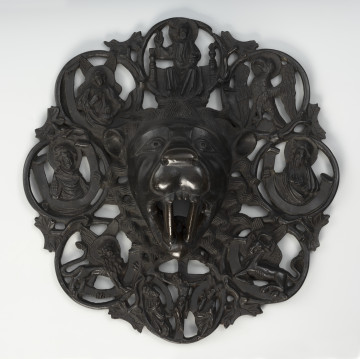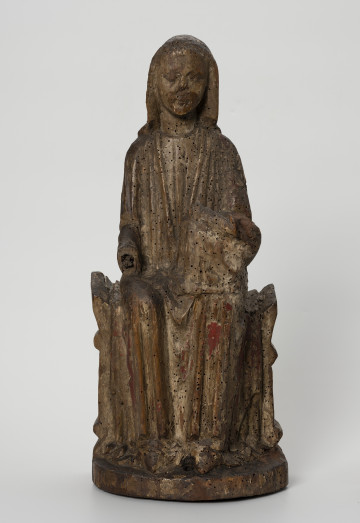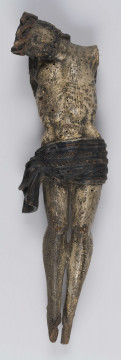
Lion's head-shaped entablature
circa 1340 — 1344
National Museum in Szczecin
Part of the collection: Medieval sculpture of West Pomerania
The representation of the Crucified as a living Christ, with open eyes, without visible signs of torment or suffering, often with a royal crown on his head, is characteristic of Romanesque art. The image emphasises the aspect of victory over death and sin and the triumph of the Christian church. In Gothic art, the representation was replaced by the image of a dead or dying Jesus on the cross with a crown of thorns on his head. The figure of Christ, called Crucifix, was initially attached to the cross, as evidenced by holes in the hand and the eyelet under feet. It represents a type of small Crucifix popular in the Romanesque period, developed at the end of the 11th century with the development of liturgical practices of the Christian Church. Due to the supreme importance of the cross among Christian symbols, crucifixes of this type were the essential equipment of churches placed on altars. They were used to make gestures in all liturgical rites. Romanesque altar crucifixes set on a spar also functioned as crosses carried during processions. Many of them were also used as reliquaries.
Kinga Krasnodębska
Author / creator
Object type
sculpture, sacred object, liturgical objects
Technique
casting, engraving
Material
bronze
Origin / acquisition method
purchase
Creation time / dating
Creation / finding place
Owner
The National Museum in Szczecin
Identification number
Location / status

circa 1340 — 1344
National Museum in Szczecin

circa 1260
National Museum in Szczecin

1801 — 1900
National Museum in Lublin
DISCOVER this TOPIC
Museum of King Jan III's Palace at Wilanów
DISCOVER this PATH
Educational path